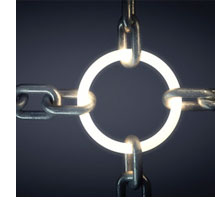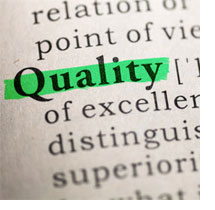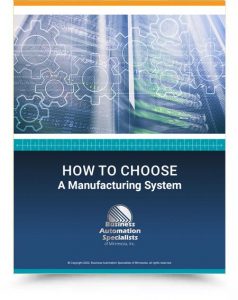- Author, Ron Ketterling
The 10 Most Effective Methods to Reduce Manufacturing Costs

“We see it all! Companies thriving in the most competitive environments, and companies that should be thriving. Those that “should be”, come to us looking for better ways to do things, streamline systems, reduce manufacturing costs and increase profitability.” Ron Ketterling, Founder & President, Business Automation Specialists, Inc
Our most successful clients focus on ways to improve costs, profits, and flexibility by reducing manufacturing costs. Manufacturing cost reduction efforts can result in significant product cost savings, manufacturing cost saving, and life cycle cost saving. As a result, when companies implement all ten of the following strategies for manufacturing cost reduction we see the greatest level of success.
1. Costs associated with Product Design
Since product development determines 80% of product cost, it makes sense to start here when looking at reducing manufacturing costs. In fact, the concept/architecture phase alone determines 60% of the cost. Product architecture determines product definition, technology, team composition, technology, part combinations, and off-the-shelf parts.
This phase also determines strategies for manufacturing, supply chain, vendors, quality, reliability, service, variety, configuration, customizations, and derivative products. These decisions have the highest impact of all manufacturing cost reduction strategies.
These include:
- Design to minimize part cost and material overhead, a huge component of which is buying off the shelf parts
- Designing out quality costs, where the return on investment doesn’t warrant the cost of the quality
- Eliminating change orders by focusing more time on the planning stage
- Focus on vendor-partnerships that can build value and ultimately reduce manufacturing costs
2. Implement Lean Manufacturing/Production Principles

Waste is defined as any activity that does not add value from the customer’s perspective. According to research conducted by the Lean Enterprise Research Centre (LERC), 60% of production activities in a typical manufacturing operation are waste – they add no value at all for the customer. The good news, just about every company has the opportunity to use lean manufacturing techniques to cut manufacturing costs.
A great place to start implementing lean production is by understanding the forms of waste and how to eliminate them. Forms of waste include waiting, transportation, inventory, motion, overproduction, over-processing, defects, and wasting talent.
3. Reduce overhead manufacturing costs with build-to-order and mass-customized inventory

The results can be staggering. Inventory Carrying Costs can be eliminated (the standard “rule of thumb” for inventory carrying cost is 25% of the inventory value on hand), and procurement costs can be reduced with automatic, on-demand resupply. In theory, better responsiveness leads to more sales. Although not a manufacturing cost cutting measure, certainly a positive outcome.
4. Standardize parts to reduce manufacturing costs

Standardization reduces the number of part types and makes it easier for parts to be pulled into assembly. Fewer types of parts ordered in larger quantities will reduce part and material overhead cost. Floor space reduction, overhead cost cuts, and time saved in setup, logistics and supply chain management are additional benefits. Other types of standardization which can also affect cost include tools, features, raw materials, and processes.
5. Rationalize the product line to focus on the most profitable products

Experience with first-time product line rationalization efforts suggests that more than 60 percent of a product line contributes less than 10 percent of the total margin. Successful rationalization initiatives have cut total supply chain management costs up to 50 percent and improved performance on inventory turns up to 100 percent among top industry performers.
6. Simplify supply chain management

Rationalization also aids in the simplification of supply chain management. By rationalizing these products away completely, your supply chain is instantly simplified. In addition, establishing Vendor/Partnerships and involving them on product design is another method in supply chain simplification. As part of the design team, vendors can recommend low-cost products that will be readily available for product creation. We frequently see too many vendors for the same products. While this may result in a few pennies in savings, the cost in purchasing and payables time may exceed this savings. When you factor in the extra requirements for put-away (and source traceability if you are in a regulated industry) and picking you are probably in a negative situation.
Overall, simplifying supply chain management can be beneficial in reducing manufacturing costs and improving the manufacturing process. Simplifying all parts of the process including planning, sourcing, production and delivery saves costs, and improves efficiency and quality of products.
7. Evaluate the cost/benefit of quality

The first step to eliminating quality costs involves designing in quality. This method assures high quality and reliability by design of the product, preventing costly errors, defects, reworks and overhead demands. Designing in quality requires a significant amount of planning and preparation. Simplifying designs, taking past quality problems into consideration, automating processes and thoroughly documenting every step of the design are all steps to reduce quality cost.
In addition, rationalizing products is a way to reduce quality costs. Rationalizing away unusual, low-profit and low-volume products raises net factory quality. Thus avoids wasting quality resources on inherently lower quality products.
8. Know how to measure, track, & report manufacturing costs
It is also important to know which cost reduction attempts can substantially raise less-obvious costs and compromise other important goals.
We have seen this happen with companies that are lacking good measurement, tracking, and/or reporting systems.
9. Total cost measurement

Implementing total cost measurement begins with the cost driver approach. Cost drivers are the root causes of a cost, or the things that drive the cost. Recognizing the factors behind the costs will provide you with more accurate and relevant information, as well as encourage further efforts to lower or eliminate manufacturing costs.
It is vitally important to identify major cost drivers and the costs associated with them. A company’s overhead expenses can give significant insight into cost drivers. Some cost drivers are not linked directly to overhead costs, the overhead can contain costs related to important cost drivers. Look at the drivers behind costs that are not defined as direct material or direct labor and how those costs impact total expenses.
The total cost needs to be quantified so everyone must make decisions with total cost in mind. Linking cost with the behavior and characteristics of products or customers will reveal areas that need cost and investment reduction. Senior management needs to make decisions based on total cost. They need to realize the importance of quantifying total cost by implementing total cost measurements. Ultimately, this will reduce manufacturing costs and transform your company.
10. Use the RIGHT Manufacturing System


